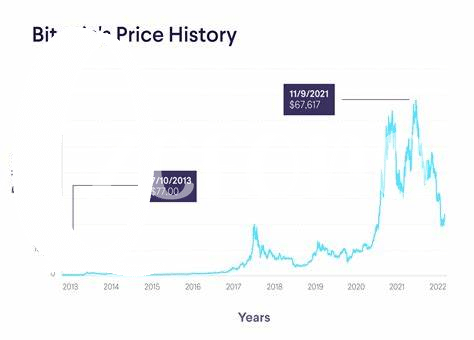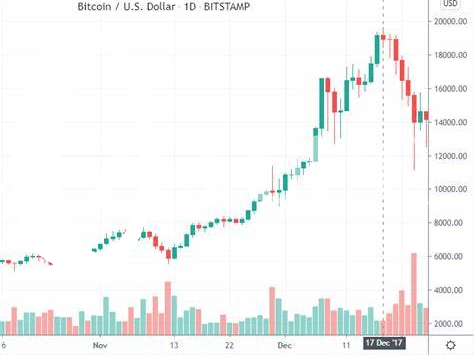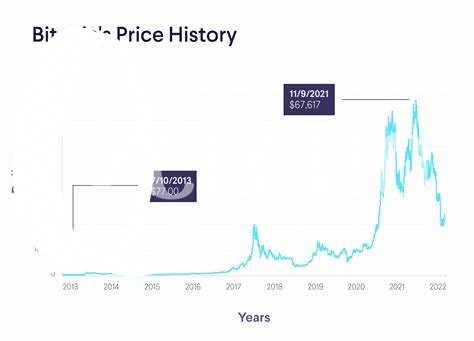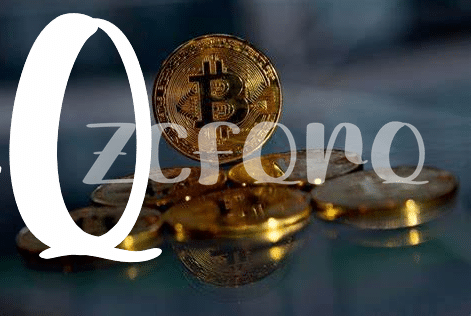Satoshi’s Secret: Bitcoin’s Birth and Ideals 💡

Once upon a time, a person or group of people known by the pseudonym Satoshi Nakamoto introduced the world to Bitcoin. This wasn’t just a new type of money; it was a revolutionary idea that aimed to create a financial system where transactions could happen directly between two parties, without needing a middleman like a bank. The goal was clear: to make financial interactions simpler, more transparent, and accessible to everyone, regardless of where they lived. Satoshi’s concept tapped into a desire many shared – for a world where financial equality and freedom are accessible to all.
| Date | Event | Significance |
|---|---|---|
| 2008 | Bitcoin’s Whitepaper Released | Marked the birth of Bitcoin and introduced blockchain technology to the world. |
| 2009 | First Bitcoin Transaction | Bitcoin was used for the first time to conduct a transaction, proving its practical application. |
Satoshi’s ideals were revolutionary, presenting a future where people could control their own finances in a secure and transparent environment. Bitcoin’s design countered the traditional financial system’s shortcomings, aiming to eliminate excessive fees, reduce transaction times, and provide a level of anonymity for users. The implications of Satoshi’s vision were monumental, challenging the very framework of how financial systems operated. This was the beginning of a change, a shift towards a world where the control of money and financial transactions could genuinely belong to the people.
The Ripple Effect: How Bitcoin Changed Finance 🌊
Imagine a world where sending money is as easy as sending an email. That’s what happened when a clever person (or group) under the name Satoshi Nakamoto introduced Bitcoin to the world. Beyond just a new way to pay, Bitcoin brought a radical idea: money without borders or banks, where every transaction is recorded for everyone to see but without anyone’s personal details. It’s like having a giant, transparent piggy bank in the sky that everyone can use but no one owns.
This giant step wasn’t just about new technology; it changed the way we think about money itself. Before Bitcoin, most of us thought banks were necessary to keep our money safe and to move it around. But Bitcoin proved it’s possible to have a kind of money that’s both secure and doesn’t need a bank’s permission to use. This idea has started a ripple effect, inspiring not just a whole universe of other digital monies but a new way of thinking about what money is and what it could be.
Enter Ethereum: Vitalik’s Vision for More 🌐

After Bitcoin started making waves, a young innovator named Vitalik Buterin saw a possibility to stretch the blockchain horizon beyond just sending and receiving digital money. Vitalik dreamed of a world where blockchain could do more—way more. Imagine not just sending coins to your friend but also creating agreements that execute themselves, or crafting your own digital tokens without starting from scratch. That’s where Ethereum comes into play, a platform with the flexibility to build all these applications and more. Its creation marked a pivotal moment, introducing the era of smart contracts and decentralized applications (dApps), expanding the blockchain realm beyond the initial vision of a digital currency.
The promise of Ethereum wasn’t just about creating a platform; it was about establishing a community and ecosystem that innovates together. Vitalik’s vision attracted developers, entrepreneurs, and enthusiasts to Ethereum, all excited to explore the vast potential of this new blockchain playground. Ethereum’s impact isn’t just in its technology but in its invitation to dream big, challenging the status quo of what blockchain can achieve. As more people joined the movement, the value of Ethereum began to grow, showcasing how powerful ideas combined with communal effort can propel technological advancements and create real-world value. 🚀💻🌍
Crypto’s Ideological Split: from Currency to Contracts 🤝

Imagine a world where money isn’t just something you withdraw from an ATM or a number in your bank account. That’s what happened when Bitcoin came along, shaking the foundations of traditional finance with its promise of being a digital currency for everyone, without the need for banks or governments to step in. But then, a new player entered the scene, bringing a fresh perspective to the table. Ethereum wasn’t just about creating another type of digital money; it was about building a whole new world where agreements could live on the internet, safe and sound, without the need for a middleman.
This shift towards more complex uses of blockchain, from simple currency transactions to creating smart contracts that automatically enforce themselves, sparked a fascinating divergence in the crypto space. For anyone keen on exploring how these changes have influenced the market’s dynamics, a deeper look into Ethereum’s role offers intriguing insights. For instance, learning how Ethereum’s approach has potentially led to a more stable investment environment compared to Bitcoin’s wild price fluctuations is quite enlightening. Dive deeper into understanding this evolution with navigating bitcoin taxation: a global perspective versus ethereum for a perspective on how ideology has not just split but also enriched the world of cryptocurrencies. From being a means to transfer value to enabling complex, automated agreements, this ideological shift has had a profound impact on how we value these digital assets today and will continue to shape their future.
Valuation Waves: Ideology’s Impact on Price 📈
Ideas are like seeds; when planted in fertile ground, they can grow into something massive and awe-inspiring. In the world of cryptocurrency, the big ideas behind Bitcoin and Ethereum didn’t just launch new technologies; they sparked movements. Bitcoin, with its promise of financial freedom and independence, captured the imaginations of millions. People saw it as more than just digital cash; it was a ticket to a new kind of financial system outside the control of governments and banks. As this vision took hold, the value of Bitcoin surged 📈, showing that when a lot of people believe in an idea, they’re willing to put their money where their heart is.
Then came Ethereum, which expanded the horizon further. It wasn’t just about creating a new type of money anymore. Ethereum introduced the idea of ‘smart contracts’ 🤝, agreements that run automatically on the blockchain, opening up endless possibilities for how we do business and interact online. This wasn’t just a new kind of technology; it was a new way of thinking about what technology could do. As more people bought into Vitalik’s vision, the value of Ethereum rose, demonstrating again how powerful ideas can drive financial value. These shifts show how closely the fortunes of these currencies are linked to what they stand for. In the crypto world, belief and value walk hand in hand.
| Event | Impact on Price |
|---|---|
| Bitcoin’s Introduction | Start of a new era in digital finance, leading to gradual then rapid price increase |
| Ethereum’s Launch | Expansion of blockchain’s scope, resulting in a significant rise in interest and value |
Future Frontiers: Where Ideology Meets Innovation 🚀

In the thrilling world of cryptocurrency, where every new technology feels like opening a door to the future, the blending of big ideas and bold innovations is creating exciting new frontiers for both investors and enthusiasts alike. 🚀 As we gaze into this promising horizon, the principles laid down by pioneers like Satoshi Nakamoto and Vitalik Buterin continue to inspire a generation of thinkers and creators, fueling a quest for platforms and solutions that not only promise financial freedom but also challenge our very understanding of what money and contracts can be. This ongoing evolution, where ideology sparks innovation, leads us to a crossroads of history and opportunity, inviting us to imagine how far the boundaries of technology and finance can be pushed.
Navigating this rapidly shifting landscape requires more than just a keen interest in digital currencies; it also demands a deep understanding of the complex interplay between technology, market forces, and regulatory environments. For those looking to dive deeper, staying updated on the latest developments is crucial. For insights into how different ideologies influence market strategies in this volatile domain, consider exploring effective bitcoin trading strategies for volatile markets versus ethereum, a resource that sheds light on the intricate dance between regulation, innovation, and value creation. As we stand on the brink of this new digital frontier, the journey from mere currency to comprehensive smart contracts represents not just a leap in technology, but a bold reimagining of what our financial future could look like. 🌐📈
